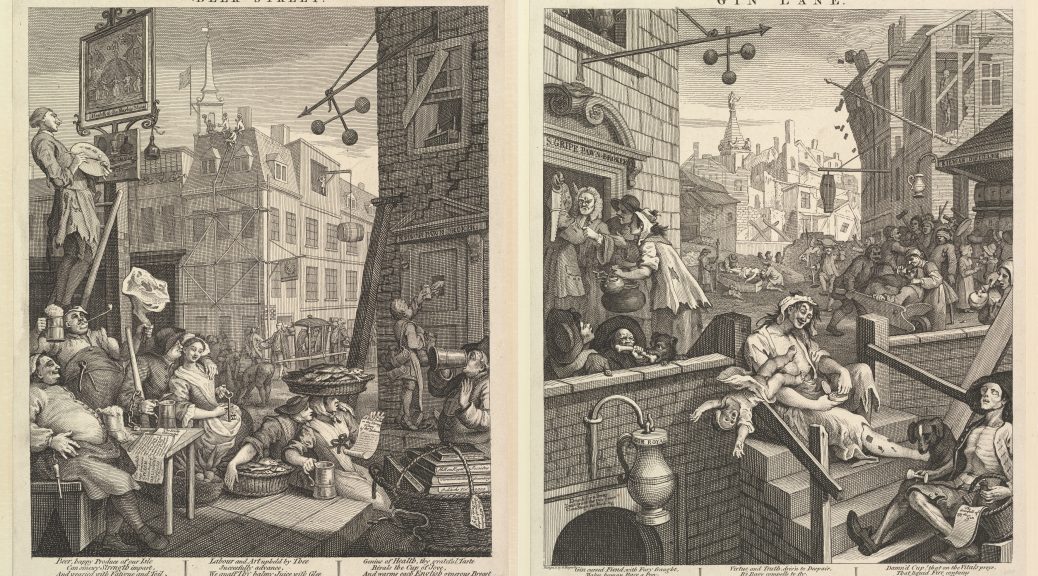For the last few months, I have been working on cleaning and stabilizing a very large (25″ x 19″) and fascinating book.
This binding contains a collection of 83 engravings, in various sizes, by William Hogarth (1697 – 1764). This item was formerly owned by Frank Baker (1910-1999), a faculty member at Duke. Hogarth was an English artist known best for his satirical works depicting morality and social criticism. These works were first executed as paintings and then sold as engravings by subscription. The prints are remarkable and capture so many small details of English life in the 18th century. Interestingly, Hogarth’s work was so widely pirated that he fought to obtain copyright protection and the Copyright Act passed by Parliament in 1735 is known as the Hogarth Act.
In order to make these prints available to patrons, the book needed quite a bit of cleaning and mending. Several of the pages at the front and back were detached.

The paper was so covered in surface grime that your fingers would become black from just turning pages, so I spent several weeks just surface cleaning everything. The resulting change was pretty dramatic.
 With the tears along the edges mended, and the loose sheets reattached, this items is a little less daunting and safer to handle.
With the tears along the edges mended, and the loose sheets reattached, this items is a little less daunting and safer to handle.
Many of the prints are large enough that they are simply sewn into the binding, but the smaller prints are mounted at the corners to larger sheets. Some of the smaller prints had become detached. Only a few of the prints in the volume have hand-applied color like plate 5 from ‘A Rake’s Progress‘ (above).

During my initial review, I thought that the first of four plates in the Election series was torn along the top (or gutter of the binding).
Upon closer inspection though, I discovered that the Election plate was whole – this torn stub was from something else.
Dr. Baker’s typewritten inventory doesn’t list another print in this location and the numbers penciled on each page aren’t interrupted, so it seems like this one has been missing for quite a while. Looking at the details of exposed wooden rafters that are depicted, this fragment could be from one of Hogarth’s more famous works, “Strolling Actresses Dressing in a Barn”.
It is hard to know for sure, but we will be noting the fragment’s location in the catalog record.
Apart from mending and reattaching the prints themselves, I also spent some time flattening the original interleaving. The binder had included sheets of thin, laid paper by affixing them to the verso of each leaf using dots of red wax. The interleaving had become very badly creased, torn, and in some cases was missing entirely.
During treatment, I flattened and repaired the interleaving as much as possible. New loose interleaving sheets were added for the openings where original interleaving was missing or had major losses.
The top engraving above, titled “Tailpiece, or The Bathos”, is Hogarth’s last engraving, published just eight months before his death. It depicts the figure of Time exhaling his last breath among ruins. In the advertisements for this print that ran in the St James’s Chronicle for April 14, 1764, Hogarth wrote that it should “serve as a Tail-Piece to all the Author’s Engraved Works, when bound up together”.
The previous owner who had these prints collected and bound honored Hogarth’s wishes.











How fascinating! I wish I were patient and meticulous enough for such work. I am impressed and grateful for you skill and temperament.
Thanks, Nancy!